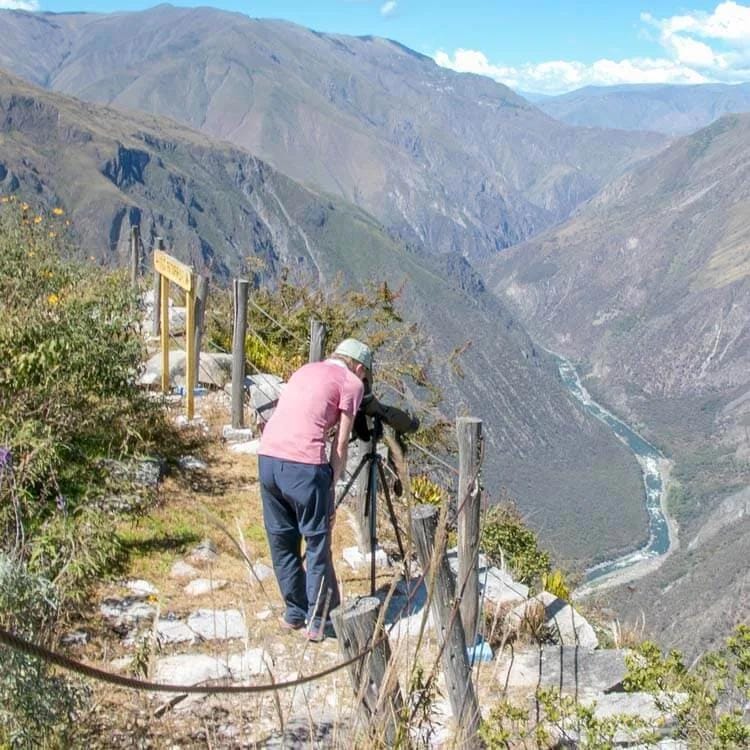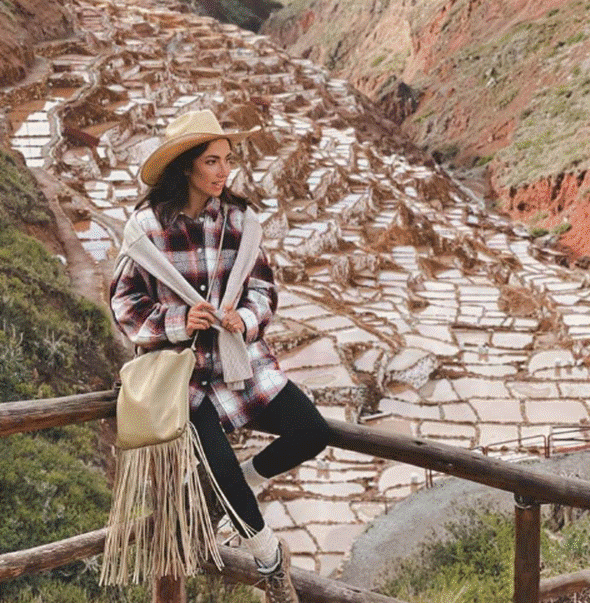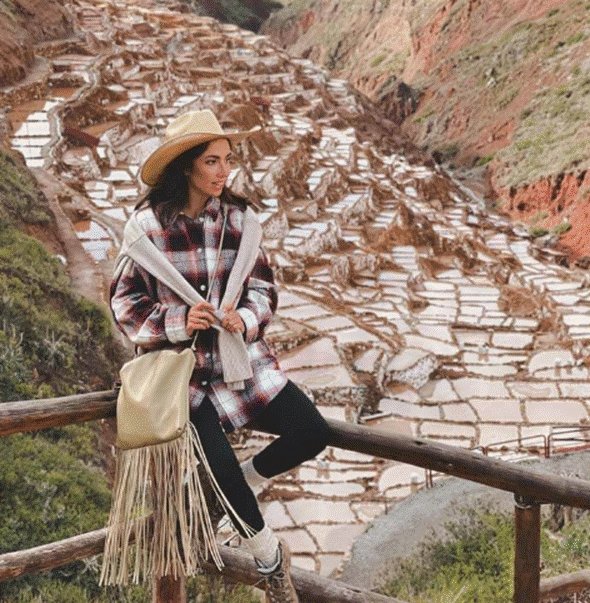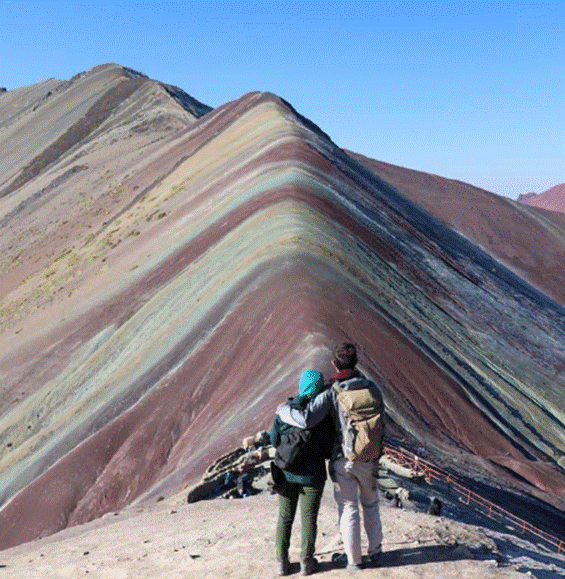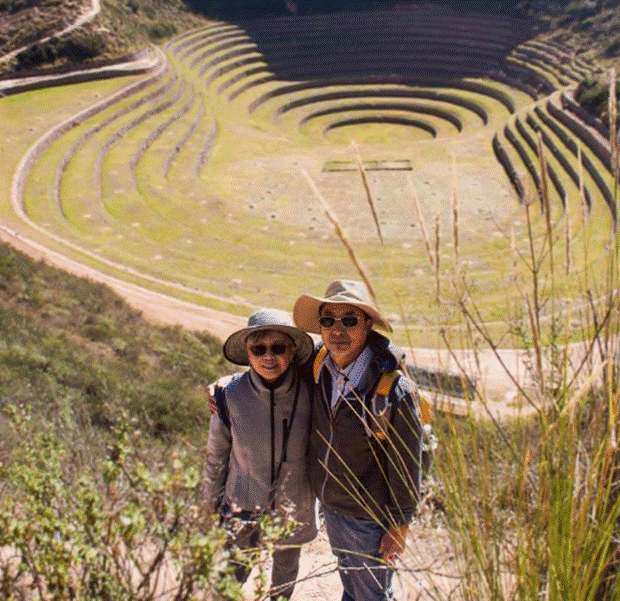Attractions in Cusco that you may not have known existed
When we think about visiting the Inca city of Cusco, Peru, our minds often go straight to Machu Picchu. But did you know there are lesser-known destinations just as breathtaking, if not more so, than Machu Picchu? In this guide, we’ll take you on a journey to uncover Cusco’s hidden treasures that are well worth visiting in 2025.
Cusco boasts a wide variety of top attractions, both natural and cultural. These include archaeological wonders, iconic mountains, stunning lagoons, trekking routes, communities, and cultural expressions, making it one of the most diverse and enriched destinations in the world. To make it easier for you to explore, we’ve categorized these attractions, starting with:
1. Archaeological and Historical Sites
This category highlights destinations that represent the cultural and historical legacy of pre-Inca and Inca civilizations, such as ruins, temples, and traditional structures. These locations also offer an unparalleled opportunity to better understand the history, traditions, and ancient techniques of Andean Inca societies.
Choquequirao Archaeological Park
Choquequirao, meaning “Cradle of Gold” in Quechua, is an awe-inspiring Inca citadel situated at 3,035 meters (9,957 feet) above sea level, surrounded by the majestic Apurímac River canyon. Often referred to as the “Sacred Sister of Machu Picchu” due to their similarities, its architectural design features agricultural terraces, ceremonial plazas, and structures adorned with llama carvings, showcasing the ingenuity and spirituality of the Incas.
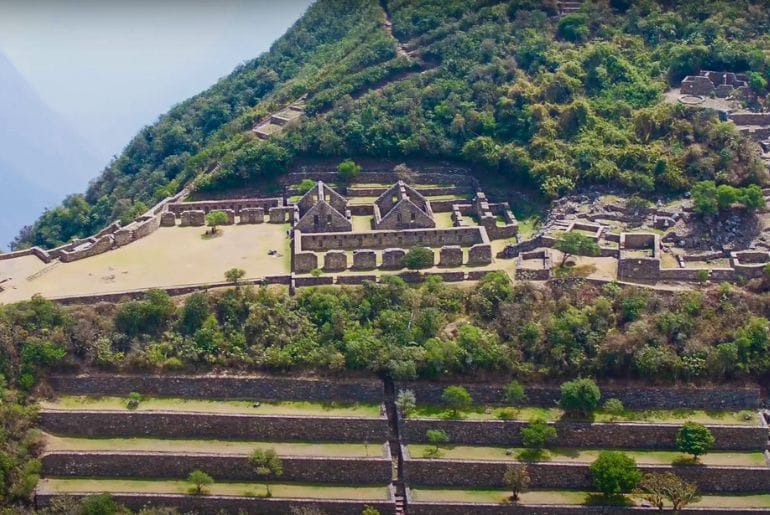
Interesting facts about Choquequirao Archaeological Park:
- Difficulty: Moderate to high; recommended for experienced hikers.
- Distance: Located 180 km (112 miles) from Cusco, about a 4-hour drive.
- Altitude: 3,035 meters (9,957 feet) above sea level.
- How to get there: You can book a tour from Cusco or take private transportation to Cachora in Abancay.
- Average cost: Prices vary based on the tour duration but typically range from $300 to $500.
- Tips: Wear appropriate footwear and be prepared for a moderately challenging hike.
Pikillaqta: The City of Wari Warriors
Pikillaqta, which translates to “Flea Town” in Quechua but originally meant “Small Town,” is located about 30 kilometers (19 miles) southeast of Cusco. This remarkable site was likely a significant administrative and ceremonial hub during the height of the Wari culture (predecessors to the Incas) between 600 and 1000 AD. Spanning over 50 hectares, Pikillaqta is known for its advanced urban planning, featuring straight streets, adobe constructions, and meticulously designed plazas. Additionally, its large storage facilities and irrigation canals demonstrate the Wari people’s resource management expertise.
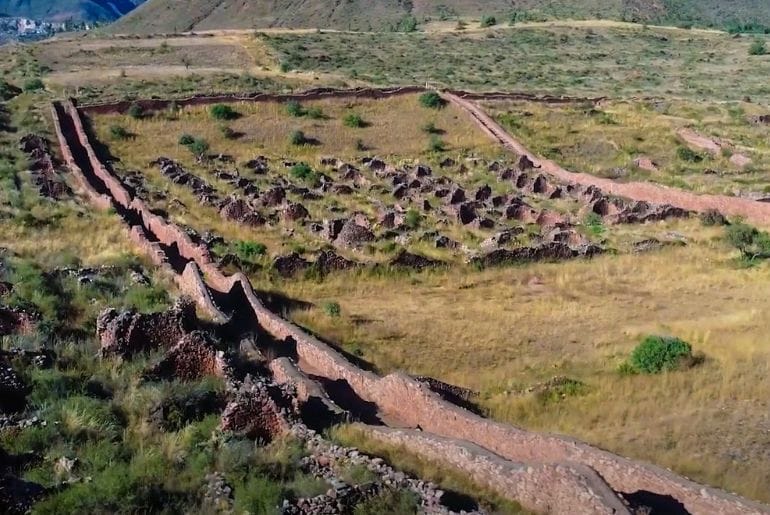
Interesting facts about Pikillaqta:
- Difficulty: Low; ideal for families and beginners, with minimal physical effort required.
- Distance: Located 32 km (20 miles) from Cusco, approximately a 40-minute drive.
- Altitude: 3,250 meters (10,663 feet) above sea level.
- How to get there: You can join a tour from Cusco or drive privately via Cusco-Sicuani.
- Average cost: Entrance is 70 soles ($19) per person if visiting independently.
- Tips: Bring water, snacks, a hat, sunscreen, and cash.
- Recommendation: Visit during the dry season (April to October) for the best weather conditions.
Raqchi: The Temple of Wiracocha, an Inca Wonder in Cusco’s Southern Valley
Raqchi, known as the Temple of Wiracocha, is an archaeological site located approximately 2.5 hours from Cusco. This 15th-century architectural complex spans a large area featuring temples, storage facilities, and its iconic circular wall. It is believed to have been a significant ceremonial and administrative center, promoting interaction among various populations within the empire. The main temple, a 92-meter-long structure, was supported by columns that remain remarkably well-preserved to this day.
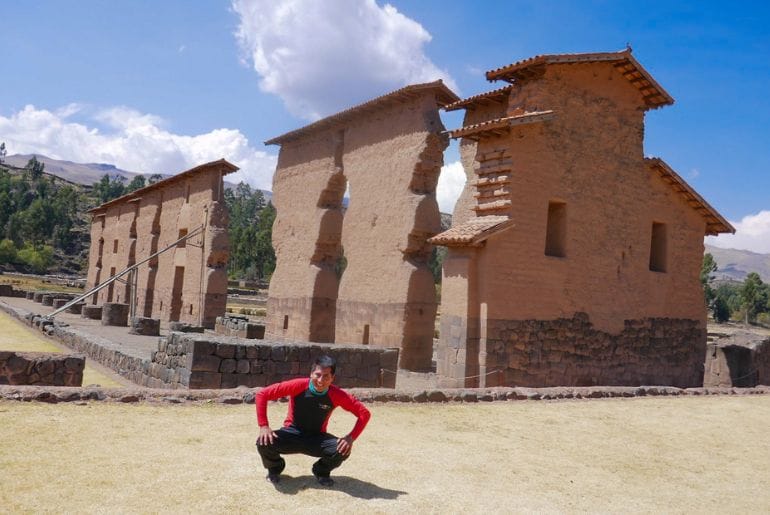
Interesting facts about Raqchi – Temple of Wiracocha:
- Difficulty: Low; ideal for families and beginners with minimal physical effort.
- Distance: 119 km (74 miles) from Cusco, about 2 hours by car.
- Altitude: 3,350 meters (10,991 feet) above sea level.
- How to get there: Take a bus from the Sicuani stop at Av. Huayruropata to Raqchi.
- Cost: Entry fee is 10 soles ($3) per person if visiting independently.
- Tips: Bring water, snacks, a hat, sunscreen, and cash.
- Recommendation: Attend the Raqchi Festival, celebrated on June 16th, for an immersive cultural experience featuring traditional dances.
Inkilltambo: The Hidden Fortress in Cusco’s Highlands
Inkilltambo, a lesser-known yet equally fascinating archaeological site, is located about 30 minutes from Cusco, near the town of Huarocondo. This historical gem features Inca structures atop a hill, believed to have served as a fortress or ceremonial site dedicated to water worship. The site’s precise purpose remains under study, but its strategic location highlights its importance in valley protection and reverence for water.

Interesting facts about Inkilltambo:
- Difficulty: Moderate, suitable for families and beginners.
- Distance: 7 km (4 miles) from Cusco, about a 10-minute drive.
- Altitude: 3,550 meters (11,647 feet) above sea level.
- How to get there: Take a taxi (approx. 20 soles) or public transport (“Inca Express”) to the “Tienda” stop.
- Cost: Entry is free if visiting independently. Tours are available for $30–$40.
- Tips: Bring water, snacks, a hat, sunscreen, and a rain poncho.
Huchuy Qosqo: The Small Cusco in the Sacred Valley
Huchuy Qosqo, also called “Little Cusco,” is an Inca archaeological site near Calca in the Sacred Valley. Renowned for its remarkable agricultural terraces, ceremonial structures, water fountains, and stone palaces, it is believed to have served as a fortress and residence for Inca Viracocha and fleeing nobles during an impending war. Despite its name, Huchuy Qosqo is not a small site; the Incas likely used Cusco as a reference to create its design.

Interesting facts about Huchuy Qosqo:
- Difficulty: Moderate to high; suitable for hikers of varying experience levels.
- Distance: 60 km (37 miles) from Cusco, approximately 2 hours by car.
- Altitude: 3,650 meters (11,975 feet) above sea level.
- How to get there: Book a tour from Cusco or travel privately to Calca, Cusco.
- Cost: Tours generally cost $100–$200 per person.
- Tips: Wear proper hiking shoes and prepare for a moderately challenging trek.
Waqrapukara: The Horn-Shaped Fortress of Cusco
Waqrapukara, an ancient Inca fortress located in the Cusco region, stands out as one of Peru’s most remarkable and enigmatic archaeological sites. Perched atop a hill over 4,000 meters above sea level, this site is celebrated for its unique architecture, featuring stone structures comparable to other iconic Inca destinations. The name “Waqrapukara” translates to “horn-shaped fortress” in Quechua, hinting at its distinctive appearance. While believed to have served both ceremonial and defensive purposes during pre-Inca times, its true function remains a mystery to archaeologists.
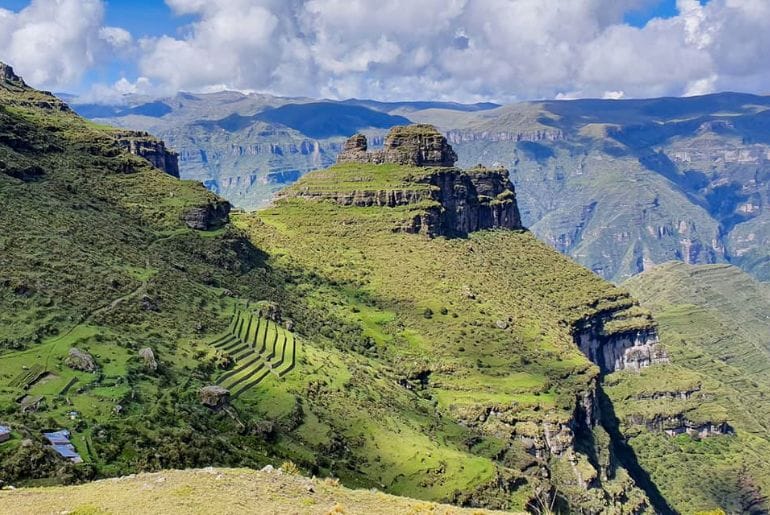
Interesting facts about Waqrapukara:
- Difficulty: Moderate to high, suitable for both novice and experienced hikers; some sections of the trek can be demanding.
- Distance: 180 km (112 miles) from Cusco, approximately 4 hours by car.
- Altitude: 4,300 meters (14,107 feet) above sea level.
- How to get there: Book a tour from Cusco or travel privately towards Sicuani. From there, head to Chuquicahuana and take a detour towards Acomayo.
- Cost: Tours range from $100 to $200, depending on the agency and tour duration.
- Tips: Wear comfortable shoes, carry trekking gear, bring water, and pack snacks for the trek.
Q’eswachaka: The Last Inca Rope Bridge
Q’eswachaka is the last remaining Inca suspension rope bridge, spanning the mighty Apurímac River. Located about 4 hours from Cusco, this marvel of engineering and cultural heritage is recognized as an Intangible Cultural Heritage of Humanity by UNESCO. Constructed entirely using ichu (Andean grass), the bridge is renewed annually in a four-day community effort employing traditional Inca techniques. This remarkable tradition, carried out by local communities, showcases the enduring legacy of the Inca civilization.
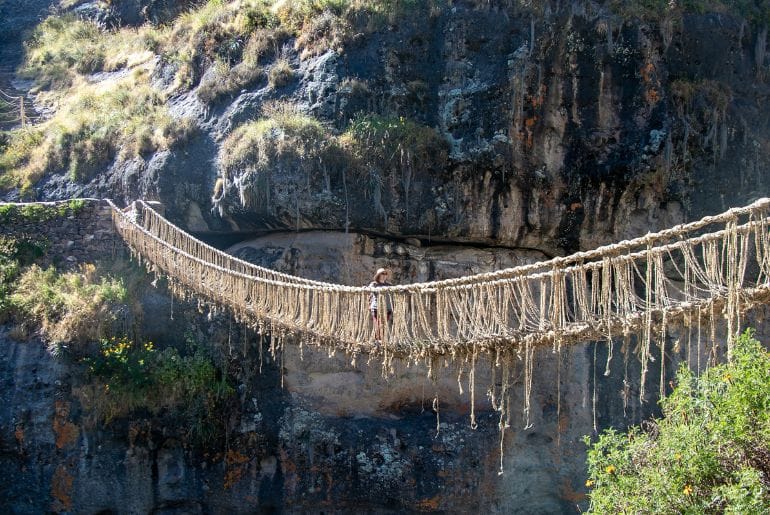
Interesting facts about Q’eswachaka:
- Difficulty: Easy to moderate, perfect for all experience levels.
- Distance: 180 km (112 miles) from Cusco, about 4 hours by car.
- Altitude: 3,700 meters (12,139 feet) above sea level.
- How to get there: Join a tour from Cusco or travel independently to Combapata, then proceed towards Yanaoca.
- Cost: Tours typically cost $120–$150 per person.
- Tips: Wear comfortable clothing and a light jacket, along with a hat, sunglasses, and sunscreen. Use supportive walking shoes.
- Pro Tip: Plan your visit in June to witness the annual reconstruction festival, a four-day event blending history and folklore.
2. Lagoons Near Cusco: Natural Wonders
After exploring fascinating archaeological and historical sites, it’s time to delve into Cusco’s breathtaking natural attractions: its lagoons. These serene bodies of water, often nestled among majestic mountains and glaciers, serve as both vital water sources and awe-inspiring destinations.
Laguna Piuray: A Tranquil Haven in Chinchero
Located at 3,750 meters above sea level in the picturesque community of Chinchero, Laguna Piuray is a natural paradise. Surrounded by towering peaks, including the Salkantay and Veronica Mountains, this blue lagoon reflects the beauty of the skies and nearby mountains. It is a crucial water source for Cusco, fed by melting snow and seasonal rains, and an ideal spot for photography and family outings.

Interesting facts about Laguna Piuray:
- Difficulty: Moderate to easy, perfect for families.
- Distance: 31 km (19 miles) from Cusco, about 40 minutes by car.
- Altitude: 3,435 meters (11,270 feet).
- How to get there: Book a tour from Cusco or take private transport to Chinchero.
- Cost: $80 to $100 per person, depending on the tour.
- Practical tips: Bring cash.
- Pro Tip: Enhance your visit with a quad bike experience.
Laguna Sibinacocha: The Remote Gem
Nestled near the Ausangate Mountain and the Seven Lagoons, Laguna Sibinacocha is the region’s largest lake and a hidden treasure for adventurers. Its remote location, changing colors, and vast landscapes make it an unforgettable experience for seasoned trekkers. Exploring this lagoon often takes two days on foot, although horseback rides can cover the area in a single day.
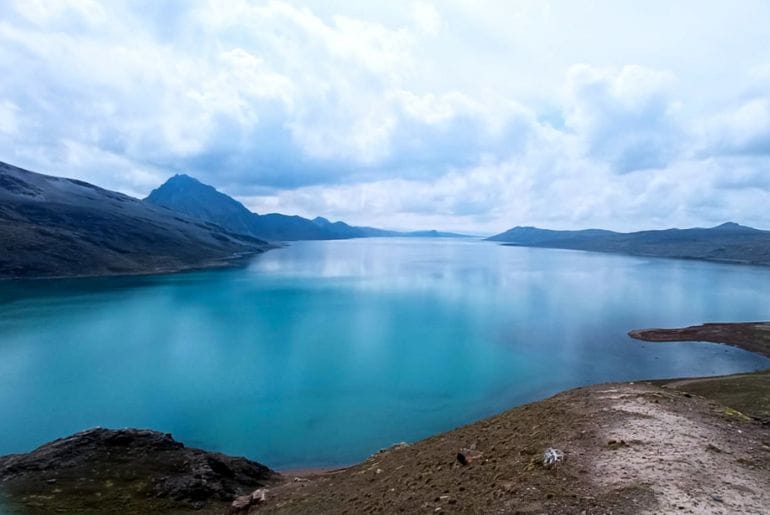
Interesting facts about Laguna Sibinacocha:
- Difficulty: Moderate to high; best for experienced hikers.
- Distance: 181 km (112 miles) from Cusco, roughly 5 hours by car.
- Altitude: 4,860 meters (15,945 feet).
- How to get there: Join a specialized tour from Cusco.
- Cost: $900 to $1,000 for a 7-day trekking expedition.
- Practical tips: Bring warm clothing, sunscreen, sturdy shoes, and all essentials for a multi-day trek.
- Pro Tip: Renting a horse can make the journey more manageable.
Pozas Turquesas de Muñapata: Hidden Crystal Pools
The turquoise pools of Muñapata are a hidden jewel just 50 km from Cusco. Tucked within a canyon near Urcos along the Cusco–Sicuani route, these natural pools captivate with their crystalline blue waters. Although swimming is prohibited, the enchanting views make it a perfect day trip for nature lovers and photographers.

Interesting facts about Pozas Turquesas de Muñapata:
- Difficulty: Easy; ideal for families and beginners.
- Distance: 50 km (31 miles) from Cusco, about 40 minutes by car.
- Altitude: 3,150 meters (10,335 feet).
- How to get there: Travel independently to Urcos and take a taxi to the pools.
- Cost: Entrance is 7 soles about $3 dolars per person.
- Practical tips: Wear quality shoes to prevent slipping.
Cocalmayo Hot Springs
Cocalmayo is a thermal water complex surrounded by lush vegetation and mountainous landscapes, located in the district of Santa Teresa, province of La Convención, about 4 kilometers from the town of Santa Teresa and approximately 20 minutes by car from there. It is famous for its three natural pools of crystalline and warm water, with temperatures ranging from 38°C to 44°C, fed by natural mountain filtrations. This place is perfect for relaxation after activities like trekking to Machu Picchu or simply for enjoying the therapeutic benefits of its waters.
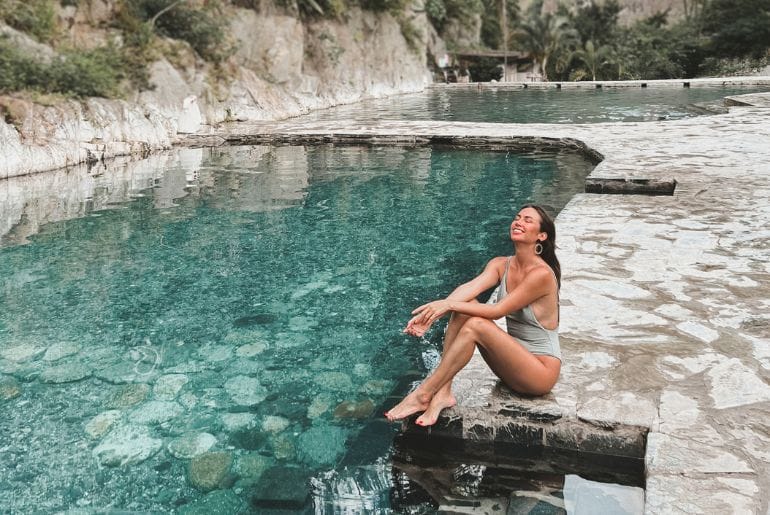
Interesting facts about Cocalmayo:
- Location: 200 km from Cusco, approximately 5 hours by car.
- Elevation: 1,600 m.a.s.l. (5,249 ft.).
- Average cost: Entrance fee of 10 soles (approximately $3) to access the thermal baths.
- Practical tips: Bring your swimsuit and mosquito repellent.
- Tip: The opening hours are from 5:00 am to 10:00 pm. Make sure to visit within this timeframe.
Humantay Lagoon
Humantay Lagoon is a stunning turquoise glacial lake located at the foot of the Humantay and Salkantay mountains. Known for its crystal-clear waters with turquoise hues, it owes its unique color to natural minerals from the melting Salkantay Glacier. This famous mountain, or Apu in Quechua, is part of the Vilcabamba mountain range, rising to 6,271 meters above sea level.
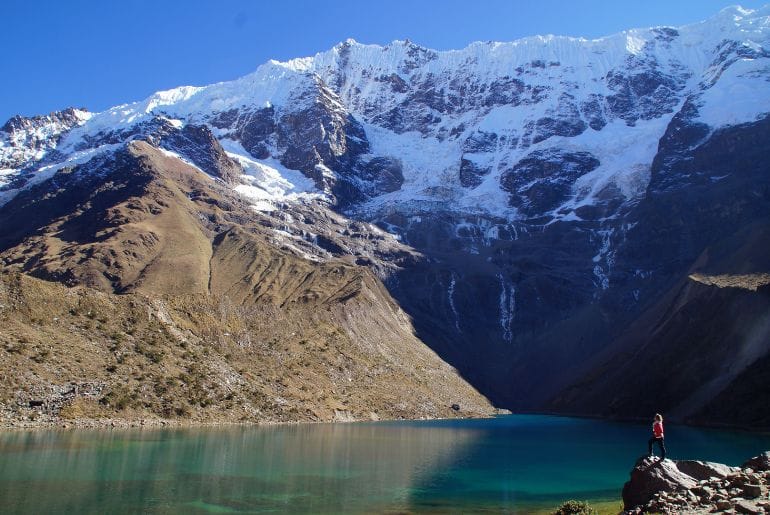
Interesting facts about Humantay Lagoon:
- Difficulty: Moderate to high, suitable for those with or without hiking experience.
- Distance: 120 km from Cusco, approximately 4 hours by car.
- Altitude: 4,200 m.a.s.l. (13,780 ft.).
- How to get there: Book a tour from Cusco or travel by private transport to Limatambo or Mollepata.
- Average tour cost: Between $50 and $100.
- Practical tips: Wear sturdy shoes and drink plenty of water to prevent altitude sickness.
Ausangate’s Seven Lakes
The Seven Lakes of Ausangate are a collection of spectacular high-altitude lagoons at the base of the majestic Ausangate Glacier, at about 5,000 meters above sea level in Cusco. These lagoons, in hues of turquoise, emerald green, deep blue, and reddish tones, are formed from glacial meltwater. Each lagoon has its charm and unique characteristics, with notable ones including Pucacocha, Azulcocha, Alqacocha, and Patacocha. Unfortunately, no boating is allowed on these lagoons.
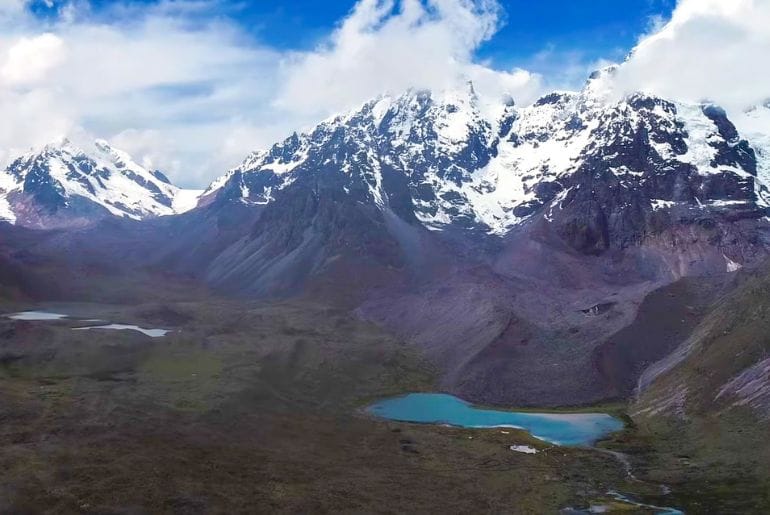
Interesting facts about the Seven Lagoons of Ausangate:
- Difficulty: Moderate to high, suitable for those with or without hiking experience.
- Distance: 100 km from Cusco, approximately 4 hours by car.
- Altitude: From 4,491 to 4,870 m.a.s.l.
- How to get there: Book a tour from Cusco or travel by private transport to Tinki or Pacchanta.
- Average cost: Between $150 and $700 per person (depending on the length of your exploration).
- Practical tips: Wear comfortable clothing, carry a light jacket, a hat, sunglasses, sunscreen, durable shoes, and all essentials for a 7-day trek.
- Tip: It’s best to go with a specialized agency.
The Four Lagoons of Acomayo
The Four Lagoons of Acomayo are a tranquil and picturesque series of lagoons located in the province of Acomayo, Cusco. These lagoons—Pomacanchi, Acopia, Asnacocha, and Pampamarca (or Tungasuca)—can be explored along a circuit rich in biodiversity, including unique flora and fauna. Each lagoon has distinct features: Pomacanchi is the largest and most popular for activities like boating, while Pampamarca is surrounded by lush vegetation and hills.
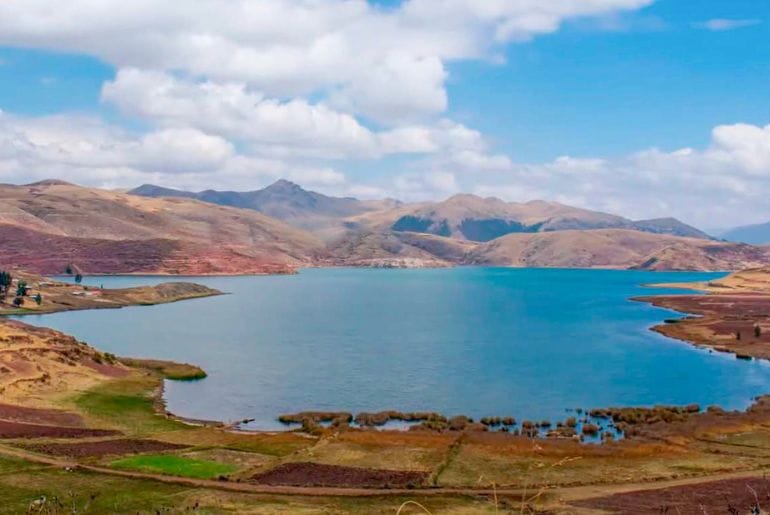
Interesting facts about the Four Lagoons of Acomayo:
- Difficulty: Moderate and easy, ideal for families and beginners.
- Distance: 107 km from Cusco, approximately 3 hours by car.
- Altitude: Between 3,707 and 3,800 m.a.s.l.
- How to get there: Book a tour from Cusco or take private transport via Sicuani, then detour toward Chuquikahuana and Acomayo.
- Average cost: Between $100 and $150 per person.
- Practical tips: Carry water, a poncho, snacks, sunscreen, a hat, and extra clothing.
3. Mountains and Snow-Capped Peaks
On the other hand, we have mountains and snow-capped peaks, which naturally belong in this category: Mountains and snow-capped peaks are destinations where the main attraction is the mountain or snow-capped peak itself, offering numerous opportunities for trekking and many other activities.
Quelccaya Glacier
The Quelccaya Glacier is located in the Vilcanota Mountain Range in Cusco. It is considered the largest tropical glacier in the world, covering about 44 square kilometers. Situated at over 5,100 meters above sea level, this impressive glacier is one of the most striking natural wonders in the Peruvian Andes. Its vast ice surface seems endless and eternal. Besides its beauty, it also houses numerous lagoons located near the massive glacier.
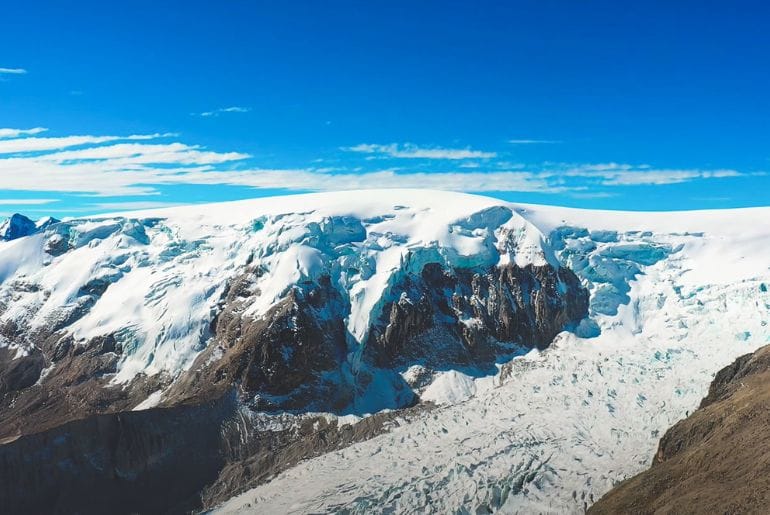
Interesting Facts about Quelccaya
- Difficulty: Moderate to high, ideal for experienced hikers.
- Distance: 197 km from Cusco, approximately 4 hours by car.
- Altitude: 5,100 m (16,732 ft).
- Access: Hire a tour from Cusco or arrange private transport to Quelccaya Glacier, following the route to Sicuani and then onto Phinaya.
- Average Price: Between $400 and $600, depending on the length of the excursion and the number of participants.
- Practical Tips: Wear comfortable clothing, and bring a light warm jacket, hat, sunglasses, sunscreen, and appropriate footwear for the trek. Be prepared for a multi-day hike with all the necessary gear.
Pallay Punchu
Pallay Punchu, also known as Apu Tacllo, translates to “Adorned Poncho” in Quechua, and is characterized by its rocky formations in colors like red, ochre, and turquoise. This mountain is quite impressive due to its resemblance to the “Andean textiles” woven by artisans throughout Cusco. Legend says that this masterpiece was created by Apu Tacllo to display his power and divinity. To explore this amazing destination, head to the province of Canas, near Layo, Cusco, at an altitude of 4,700 meters above sea level. From the summit, you can view the stunning Langui Lagoon.
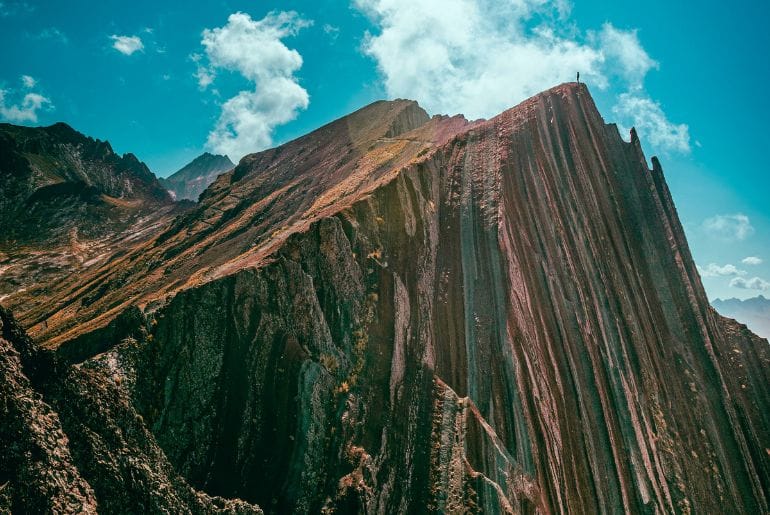
Interesting Facts about Pallay Punchu
- Difficulty: Moderate to high, suitable for both beginner and experienced trekkers.
- Distance: 194 km from Cusco, approximately 4 hours by car.
- Altitude: 4,700 m (15,420 ft).
- Access: Hire a tour from Cusco or travel by private transport to Layo, then begin your hike towards Pallay Punchu.
- Average Price: Between $120 and $200.
- Practical Tips: Be sure to wear trekking shoes, apply sunscreen, wear sunglasses, and bring sufficient water for the hike.
Wilcacunca Mountain: The Little Brother of Vinicunca and Palccoyo
Wilcacunca, also known as the Rainbow Mountain, is a newly discovered and promoted tourist destination. It boasts over four distinct color formations, and what sets Wilcacunca apart is its vast mountain landscape adorned with colors, including the typical hues of existing rainbow mountains, plus the addition of black and turquoise shades. Unlike other similar destinations, Wilcacunca remains tranquil and less crowded, making it an excellent alternative for travelers who seek to explore a naturally beautiful environment without the large crowds.

Interesting Facts about Wilcacunca
- Difficulty: Moderate, suitable for both experienced and beginner trekkers.
- Distance: Located 134 km from Cusco, approximately 4 hours by car.
- Altitude: 4,950 m (16,240 ft).
- Access: You can hire a tour from Cusco or take private transport via Pitumarca to reach Rainbow Mountain.
- Average Price: Typically ranges from $150 to $200.
- Practical Tips: Be sure to wear trekking shoes, use sunscreen, sunglasses, and a hat, and carry plenty of water.
- Pro Tip: For the most vibrant colors, visit in the afternoon. If possible, plan your trip around the Chaco Festival, which takes place in May or July.
4. Canyons and Valleys
Lastly, we have the final category of canyons and valleys, which are natural formations shaped by millions of years of erosion by Mother Nature, providing valuable habitats for diverse flora and fauna.
Red Valley and Red River
The Red Valley and the Red River are two of the most unusual and striking destinations you can find in the southern part of Cusco. The Red Valley, with its deep red and crimson rock formations, stretches across the mountains of the Vilcanota Range. Its mineral-rich soils, such as iron oxide, give it its characteristic color, creating a landscape resembling a rocky desert, yet full of life and vegetation, offering stunning views of the surrounding mountains. On the other hand, the Red River, despite its name suggesting red waters, is actually a crystal-clear green river that turns reddish during the rainy season due to the Red Valley’s mineral content.
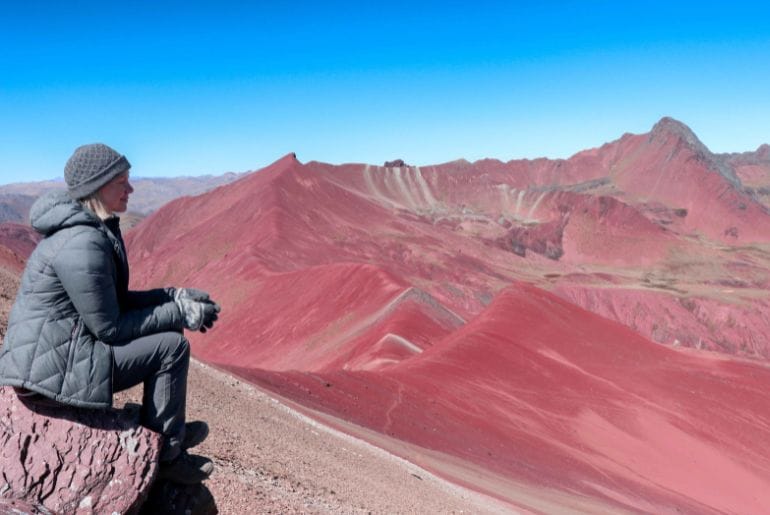
Interesting Facts about the Red Valley
- Difficulty: Moderate to high, ideal for those with prior hiking experience.
- Distance: Located 127 km from Cusco, about 3 hours by car.
- Altitude: 5,038 m (16,529 ft).
- Access: Hire a tour from Cusco or use private transport to Pitumarca, and then continue to Chillihuani, where the hike starts.
- Average Price: Typically ranges between $300 and $500.
- Practical Tip: Be sure to carry cash, as local communities charge an access fee.
- Pro Tip: If you’re visiting in June, be sure to enjoy the Inca Cancha festival while exploring the Red Valley.
Chonta Condor Canyon: A Meeting with the Sky Giants
The Condor Canyon in Chonta is one of the most incredible and less explored destinations in the Apurímac region, south of Cusco. This canyon is renowned not only for its stunning landscape but also for being home to one of the largest populations of Andean condors in their natural habitat. With cliffs rising over 3,500 meters high, the canyon provides spectacular views of the mountains and deep ravines. From the viewing points, visitors can witness the majestic condors, with wingspans of up to 3 meters, soaring through the sky in search of food and more.
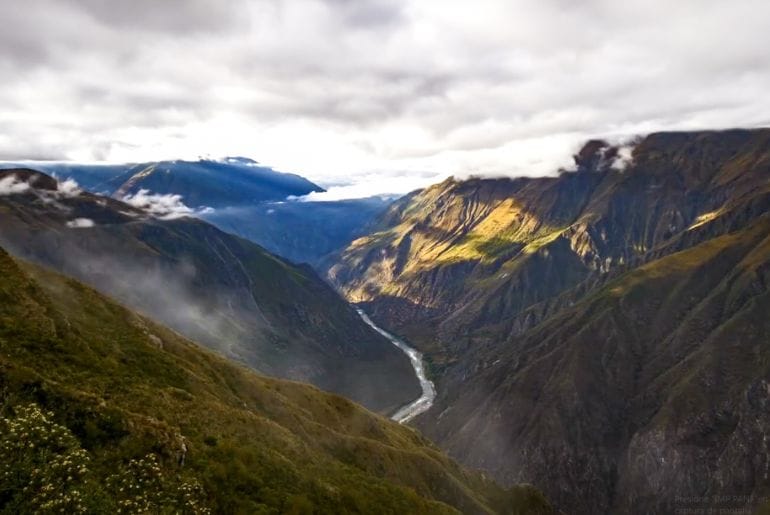
Interesting Facts about the Condor Canyon Chonta
- Difficulty: Moderate to high, ideal for both experienced and beginner trekkers.
- Distance: Located 98 km from Cusco, approximately 3 hours by car.
- Altitude: 3,400 m (11,155 ft).
- Access: You can hire a tour from Cusco or use private transport to reach Limatambo, then continue on to Chonta.
- Average Price: Between $180 and $200.
- Pro Tip: For the best opportunity to observe the condors, plan your visit either early in the morning or later in the afternoon.
Ananiso Canyon
Ananiso Canyon, located south of Cusco in the Cusco region, is one of the most beautiful canyons you can visit when exploring the area. This magnificent canyon has a depth of 150 meters and extends 3 kilometers, within which you’ll find spectacular geography, including enormous rock formations, deep chasms, waterfalls, and mysterious caves with prehistoric paintings. If you’re lucky, you may even spot an Andean condor soaring overhead, as this area is frequented by these majestic birds. An important note is that you can explore the canyon both from inside and from the surface.
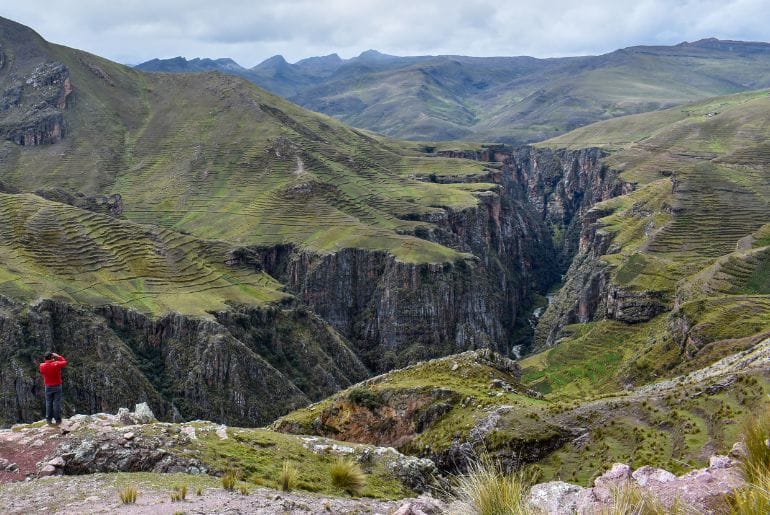
Interesting Facts about Ananiso Canyon
- Difficulty: Moderate to high, welcoming both beginner and experienced trekkers.
- Distance: 140 km from Cusco, around 3 hours by car.
- Difficulty: Challenging but suitable for trekkers at varying levels of experience.
- Distance: 131 km away from Cusco, about 4 hours by car.
- Altitude: 4,200 m (13,780 ft).
- How to get there: Hire a tour or travel via private transport to Pitumarca, then detour towards Ananiso to start the hike into the canyon.
- Price Estimate: Between $150 and $200.
- Practical Tip: Ensure you have appropriate footwear and bring a poncho, as weather conditions can change rapidly.
- Extra Tip: If visiting in June, don’t miss the community festivals and exhibitions often held during that month.
Bridal Veil Cave in Pitumarca Apu Uyayok
The Bridal Veil Cave, located in Pitumarca, Cusco, is an impressive natural phenomenon that captivates visitors due to its unique shape and beauty. This cave gets its name from a rock formation inside that, from certain angles, resembles a delicate bridal veil. The structure, shaped by wind and water erosion, is accompanied by spectacular waterfalls, adding a mystical touch to this breathtaking location.
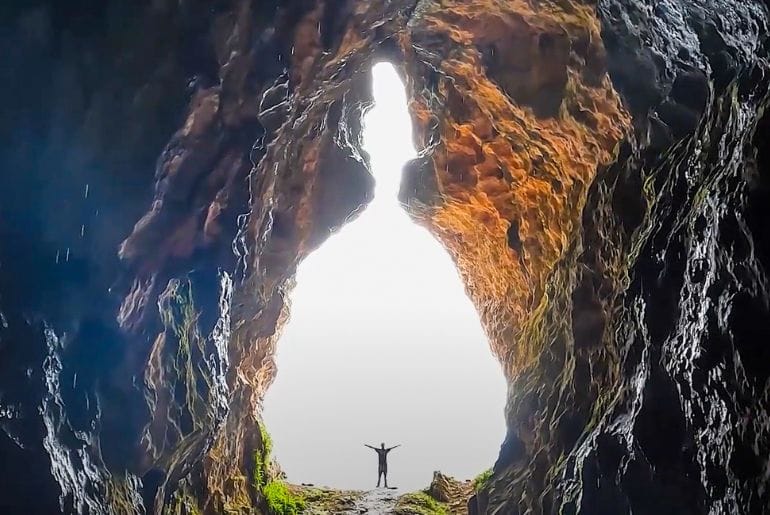
Interesting Facts about Bridal Veil Cave
- Difficulty: Moderate to high, ideal for both beginner and experienced hikers.
- Distance: 140 km from Cusco, which takes approximately 3 hours by car.
- Altitude: 4,650 m (15,256 ft).
- Access: You can take a bus from Cusco to Sicuani, or alternatively, hire a taxi from Pitumarca.
- Average Price: Typically ranges between $100 and $150.
- Practical Advice: Make sure to wear sturdy footwear and be prepared for a moderate hike, as the terrain can be challenging.
Paucartambo Three Crosses Viewpoint: The Sunrise of the Andes
Located more than 3,900 meters above sea level, the Three Crosses Viewpoint in Paucartambo is famous for offering one of the most spectacular sunrises in the world. This privileged spot, known as “the balcony of the east,” provides a panoramic view of the sun rising over the Amazon rainforest as the Andean mountains are bathed in the first golden rays of the day. During the winter solstice, the sunrises are even more remarkable, with a unique natural phenomenon creating the illusion of a “double sun.” This viewpoint is just a few hours away from Paucartambo.
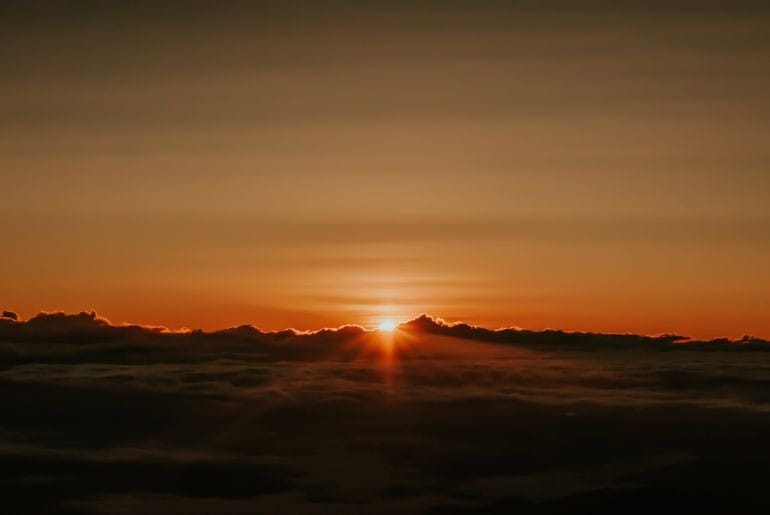
Interesting Facts about the Three Crosses Viewpoint
- Difficulty: Moderate to high, ideal for those with some hiking experience.
- Distance: Located 105 km from Cusco, which is about 3 to 4 hours by car.
- Altitude: 3,900 m (12,795 ft).
- Access: Travel via private transport or take a guided tour from Cusco to Paucartambo district. Then, continue on the road leading to Manu National Park, following the path to the Three Crosses viewpoint.
- Average Price: Range from $60 to $100.
- Recommendations: The optimal time for a visit is between June and July, around the winter solstice, to witness the rare phenomenon of the “double sunrise.”
- Pro Tip: For those planning to visit in June, it’s a great chance to also experience the Virgen del Carmen festival in Paucartambo, taking place on June 14 and 15.


